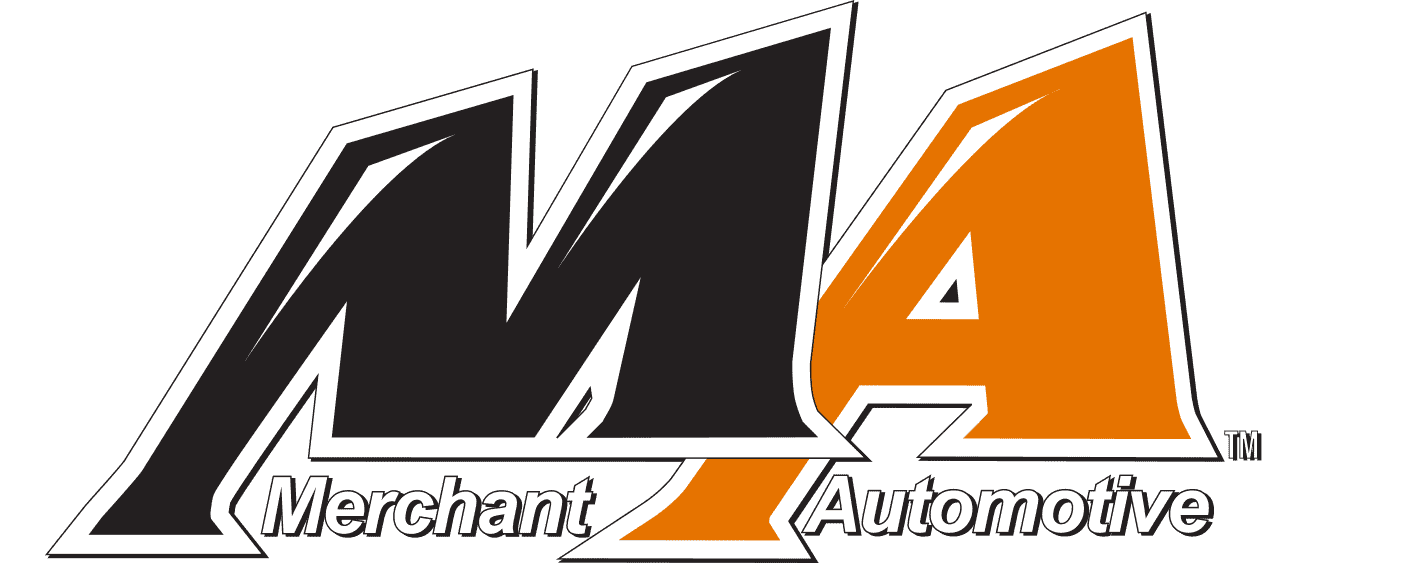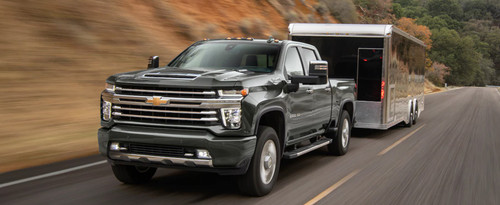Diesel engines like the General Motors Duramax have a lot of ins and outs that can make them different from other internal combustion engines.
In simple terms, Duramax diesel and standard gasoline engines are very similar in terms of design and how they operate. In fact, most people would not be able to tell them apart if they were placed side by side with no accessories attached.
While both engines derive power from burning (combusting) fuel, the Duramax diesel does a better job of transferring it into usable energy. This can be attributed to the properties of diesel fuel and the higher compression ratio of the engine. At the same time, it is why they are much heavier than a similarly sized gasoline engine and have a lower red line.
With that said, what are the origins of the diesel engine and how has it impacted the world we live in?
Read on and we will cover how marvels of engineering like the General Motors Duramax have revolutionized the world of not only heavy-duty trucks, but our society as a whole.
Let’s get into it!
ORIGINS OF DIESEL ENGINES (HISTORY)
The diesel engine bears the name of its inventor, Rudolf Diesel. A brilliant engineer, he was acutely aware of the inefficiencies of steam engines that were commonplace in the late 1800’s. With a keen understanding of how the internal combustion engine worked, a relatively new concept at the time, he went about improving it with the goal of achieving combustion without needing an added spark.
The first prototype of his engine debuted in 1893 although it failed to achieve the 40% to 50% level of efficiency he sought. However, even at 16%, it was higher than that of a contemporary steam engine. While the early designs were far from reliable, the diesel’s inherent advantages were apparent.
Sadly, Rudolf Diesel would not live to see the full potential of the engine he created and died under mysterious circumstances in 1913. However, the diesel had made its mark on history, and it was here to stay.
Suffice to say, more than a century later it would be difficult to imagine modern society without Rudolf Diesel’s invention as it literally drives the global economy. Nearly all of the world’s goods travel on diesel-powered vessels, trains, and trucks. Likewise, the products we buy online and the food we eat arrive on diesel-powered trucks. Yes, every time you fire up your Duramax, you have Rudolf Diesel to thank.
Despite having some advantages over gasoline engines like improved fuel economy, the diesel is often misunderstood as being dirty and noisy. While there is some truth to that for older models, engines produced over the last decade are cleaner and quieter than ever. Take one look at the GM’s Duramax lineup since its inception in 2000 and you see just how far the technology has come in a matter of two decades.
HOW DOES A DIESEL ENGINE WORK?
In terms of the engine design, four-stroke types of diesel engines like the Duramax and gasoline-powered internal combustion engines (ICE) are essentially the same. Likewise, power is made by combusting air and fuel inside the cylinder although where they diverge is how that is achieved along with the air and fuel delivery.
For starters, a diesel is void of ignition coils, spark plugs, and spark plug wires. While air and fuel are compressed in the same manner, the higher compression ratio of a diesel causes the air to become superheated. Thus, when the fuel is injected into the cylinder at the top of the compression stroke, it instantly combusts without the need for a spark plug. Part of the reason why Duramax diesel engines are so heavy is because of the extra strength and reinforcement required to contain this process.
Another difference is how the air and fuel are delivered. On a gasoline engine, airflow is regulated by the throttle body, and the fuel is typically injected into the intake manifold. In contrast, a diesel does not have a throttle body, and the fuel is injected directly into the cylinder, resulting in a more efficient burn. Likewise, the fuel pressure on a Duramax diesel is considerably higher, between 26,000 to 30,000 psi compared to roughly 30 to 50 psi for a gasoline engine.
The other distinction between the two is the design of the cylinder head and the pistons. On a Duramax diesel, the combustion of the air and fuel occurs in a recessed area on the top of the piston crown (often referred to as a bowl). This is in contrast to a gasoline-powered engine where it is located in the cylinder head.
WHAT ARE THE BENEFITS OF DIESEL ENGINES?
Aside from being more efficient, there are a number of advantages that a diesel such as the mighty Duramax offers over its gasoline-powered counterpart:
More Reliable
In general, they are more reliable. As mentioned earlier, there are no ignition components like spark plugs and coils that can fail and need to be replaced. Likewise, no throttle body that can get stuck or gummed up. Sure, there are several persistent issues on the Duramax but in general, they are rock solid motors.
In addition, (and due to how they operate) a diesel block is constructed of iron. Likewise, the components that make up the rotating mass like the crankshaft and connecting rods are typically forged (and beefier) than those used in a gasoline engine. This translates into a sturdier motor with a lifespan that can be measured in the hundreds of thousands of miles with proper maintenance and care. Again, Duramax engines are not infallible but with the right parts, they can make serious horsepower over a long period of time.
Responsive to Tuning
Turbo diesels, like the Duramax, are responsive to modifications like bigger turbos and tunes with fewer drawbacks and gaining 100 horsepower from the latter is not unheard of. At the same time, a diesel is not prone to detonation which can be an issue when raising the boost levels on a gasoline engine. Anyone involved in the tuning scene knows this can lead to catastrophic failure in short order!
Diesel Fuel
A major advantage is combustibility (or lack thereof) as diesel fuel does not emit flammable vapors and is not a fire hazard like gasoline. In addition, modern Diesels like the Duramax can run off biodiesel and recycled vegetable oils. Aside from not being derived from petroleum, they burn cleaner with fewer emissions.
WHAT ARE THE DOWNSIDES OF DIESEL ENGINES?
Higher Sticker Price
While we can assure you the good outweighs the bad, we would be remiss to not point out that diesel engines have some disadvantages. With that said, the higher sticker price can be a turn off, especially for smaller passenger vehicles. The added expense can be attributed to the engine being more costly to build, a more complicated fuel system along with the turbocharger and related components. This is especially true for GM Duramax-equipped trucks with Allison transmissions, as they are tens of thousands more than their smaller cousins.
Higher Maintenance Costs
This might sound contradictory to an earlier comment about reliability, but diesel engines are generally more expensive to maintain than their gasoline-powered counterparts. Replacing components like a turbocharger or injection pump can easily cost a few thousand dollars. Likewise, many repairs involve taking your truck to a diesel specialist like Merchant Automotive, which may not be a close drive for you.
Lastly, (and due to the high operating pressure) the injection pump is less tolerant to dirty fuel. As such, regularly changing your fuel filter and using quality fuel cannot be stressed enough!
Availability of Fuel
In the U.S., the availability of diesel fuel can be an issue. Likewise, unless you fill up on a popular truck route, there is a possibility it may have been sitting there for a while. Making matters worse is the fact diesel fuel is prone to absorbing water and contaminants which can lead to costly repairs (see above).
With that said, diesel engines like the Duramax will almost always outlast their gasoline-powered counterparts when properly maintained.
FUTURE OF DIESEL ENGINES
Suffice to say, the writing is on the wall for gasoline and diesel-powered engines, with some countries banning their sale by the end of the decade. The future of transportation is shaping up to be a form of electric and hydrogen-powered vehicles (or a combination of the two). Even though modern, powerful, and clean running diesel engines like the Duramax are much cleaner than those produced a decade ago, the Dieselgate scandal has soured the public’s perception of them.
While this will probably be the last decade for many diesel-powered vehicles, especially in the consumer segment, it will live on for the foreseeable future in marine applications, heavy industry, and transportation. At the end of the day, General Motors Duramax-equipped heavy-duty trucks are specialty vehicles with a specific purpose and will live on.
Electric-powered vehicles are more expensive, the infrastructure is lacking, and they don’t have the range needed for long-distance travel. Hydrogen shows promise and may very well be the future, but it is a good decade away from becoming a mainstream technology.
With that said, the diesel engine has come a long way and it is not going to disappear overnight. Modern technology has breathed some extra life into it, and they are cleaner and more fuel-efficient than ever. Just look at the power produced in a modern Duramax engine, it is remarkable! Suffice to say, there is still some time to enjoy what are arguably the best diesel engines produced to date.
While Rudolf Diesel may not have lived to see the full potential of the diesel engine, we can’t say he would be disappointed with how it has progressed and lives on over 100 years later.









